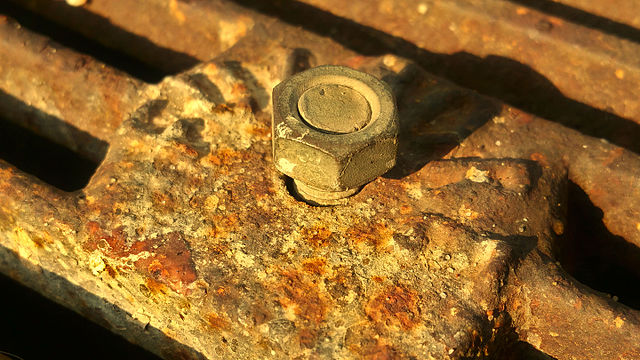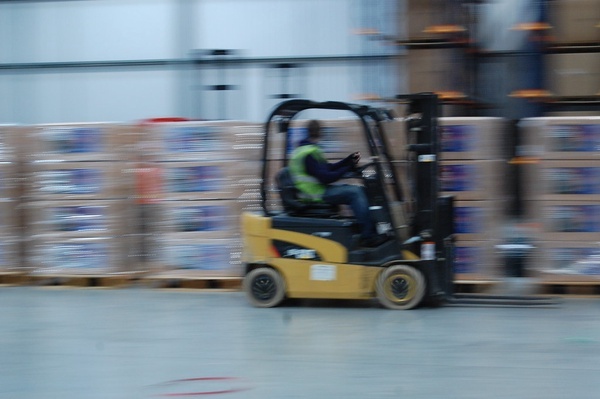
What is the community wealth building approach?
Community wealth building is an approach to economic development that strengthens communities while fostering inclusive growth. This approach leverages assets that already exist within a community to create new forms of shared prosperity. Rather than relying on expensive incentives designed to entice outside corporate entities (which may also send profits back to shareholders and distant corporate offices), community wealth building aims to create a resilient infrastructure of locally controlled businesses, powerful and responsive anchor institutions (such as schools, hospitals, and cultural institutions), and new vehicles for driving local economic opportunity.
How do the organized construction trades help build wealth for Illinois communities? Through their operations, business structures, employment practices, and economic impacts, the organized construction trades help build community wealth in many ways.

Local Business Ownership
The vast majority of organized construction and contracting firms are place-based small businesses with deep roots in the communities where they were formed. Many are passed down through generations of family ownership. In this way, they provide stable local employment, tax revenues, and other benefits to communities.
Workforce Development
Through apprenticeship and pre-apprenticeship programs, the organized construction trades provide highly valuable training and life skills education that give students -lifelong skills and expertise, leading to career advancement and good, secure employment.
Infrastructure Strength
Strong water, electric, transportation, and other infrastructure systems are vital to community economic growth as well as public health and safety. The organized construction trades deploy the most advanced training, materials, and techniques to keep community infrastructure sound and make it possible for communities to grow.
Local Economic Participation
The family-supporting wages and healthcare, retirement, and other vital benefits that workers earn in the organized construction trades bring economic security to these workers and their families. Union construction workers rely far less on public assistance than their non-union counterparts and have more disposable income to spend in their communities, supporting local businesses and helping to increase the capacity of municipalities to provide needed services to residents and businesses.
Community Life
Workers and employers in the organized construction trades are often actively involved in the life of their communities. Their participation in local government, community organizations, and other civic activities helps to increase community vitality and hometown pride.
Development Capacity
The organized construction trades represent a ready force of highly skilled and experienced crews fully prepared and equipped to handle all types of development projects. These crews make it possible to stand up high-quality buildings and infrastructure that generate revenue and jobs – and do so on time and on budget.
Equity
The organized construction trades are working to help level the playing field for minorities and other traditionally underserved populations. All workers within the organized construction trades are paid a fair and family-supporting wage and have access to vital benefits. Training and employment opportunities offered by the organized construction trades help low-income communities close opportunity gaps and break the cycle of poverty by providing career ladders, entrepreneurial opportunities, and other means of advancement.
Learn More
To learn more about community wealth building, watch Community Wealth Building in the Age of Recovery, our 2020 virtual forum featuring an all-star lineup of community wealth building experts.
Download an enhanced PDF of this article with tips on how communities can harness the power of the organized construction trades to help build community wealth here.
THE HIGH COST OF CORROSION
November 11, 2021

Research from the Association for Materials Protection and Performance (AMPP – formerly NACE International and SSPC) shows that the cost of corrosion can reach $2.5 trillion or higher globally every year – equivalent to 3.4% of global GDP. In the United States alone, the annual cost of corrosion is estimated at more than $450 billion. A large portion of this cost is borne both directly and indirectly by communities.
In communities across Illinois, corrosion has weakened municipal infrastructure systems, impeding community growth and economic development and reducing municipal capacity and prosperity. Crumbling roadways, bridges, and water systems drain resources, increase operational costs, and rob opportunity by discouraging business growth.
Sadly, the economic cost of corrosion is only part of the story. The cost of corrosion in terms of public safety and ecological health is even higher. When corroded structures fail – when bridges collapse, barriers give way, pipes burst, or storage tanks rupture – the results can be both deadly and disastrous for the environment.
But the staggering costs of corrosion need not be an inescapable fact. By using available and effective corrosion control practices, AMPP estimates that savings of between 15% and 35% of the cost of corrosion could be realized – equivalent to between $375 and $875 billion annually on a global scale. More importantly, lives could be saved, and the environment protected.
Proper and effective corrosion prevention and mitigation is highly specialized work that should be performed by trained and certified industrial coatings contractors. Equipment and facilities can last 5-10 times longer when industrial coatings are applied properly by a trained, skilled workforce.
By demanding that industry-leading corrosion control systems and practices be a part of every maintenance and new build infrastructure project, communities, facilities operators, and other stakeholders can reduce long-term costs, increase climate resilience, drive economic development, and protect public safety and the environment.
To learn more about how to stop corrosion before it starts and why protective coatings fail, visit the Corrosion Illinois Network at www.corrosionillinois.com.
Market insights you can use, delivered in a single bite.

Industrial Market
Driven by the logistics sector (comprised of both warehousing and distribution) – and the nation’s seemingly insatiable hunger for consumer goods – the industrial market is on a roll. And it looks like the high times for the industry are here to stay for a while.
Records continue to fall, with the market posting historic or near-historic highs in construction, occupancy, absorption, and asset sales. In the Chicago region, market data firm CoStar reports that 24.6 million square feet of industrial space is currently under construction, much of it destined for logistics uses. Twenty-two million square feet have been delivered over the last 12 months. Yet demand is still outstripping supply, with 28.4 million square feet absorbed during that time, driving the regional vacancy rate down to just 5.6 percent.
Not surprisingly, rents have responded to the intense demand, growing 6.3 percent over the last year, compared to a historic average of just 2.3 percent.
CoStar’s list of top leases signed over the last 12 months tells us something about who we became in the pandemic: Harbor Freight Tools, Clorox Company, Scotts Miracle-Gro, Wayfair, and Walmart all signed deals for million-plus square foot spaces.
Most analysts agree that the heightened market conditions will persist at least through 2022, particularly as the pandemic continues to abate and consumers gain confidence in spending down a portion of their savings – which for many fattened during lockdown conditions.
For Chicago – and Illinois more broadly – the future of the industrial market looks particularly bright as the region will continue to benefit from unmatched transportation connections (particularly rail), a large and ready workforce, and – something that many companies (particularly manufacturers) are increasingly concerned about – an unequaled supply of fresh water.

In December of 2019, the three International Union of Painters and Allied Trades (IUPAT)-affiliated District Councils with primary jurisdiction in Illinois and their allied Contractors Associations agreed to form a new labor-management alliance to help communities across the state achieve their community and economic development goals. That alliance, which became the TCDF, will celebrate a milestone next month as it reaches two years of operations.
From the start, the TCDF’s work embodied the belief that everyone has a right to economic opportunity and that communities benefit when more individuals have the means to fully participate in their local economies.
During the historic period of turmoil and uncertainty brought by the COVID-19 pandemic, the TCDF has stayed true to its vision of helping to foster inclusive growth. Through this vision, the organization focused its work on community empowerment through four critical areas of community and economic development: infrastructure resilience, workforce development, economic opportunity, and housing balance. According to TCDF Executive Director Todd Dotson, “TCDF partners recognized from the beginning that we all wanted strong communities for our members and employers to live and work in, and as a construction trade we were uniquely suited to work in these focus areas.”
One of the primary activities of the TCDF over the last two years has been to produce original programming that provides new insights into community and economic development issues. To that end, its inaugural program featured a panel of all-star experts in the innovative branch of economic development known as community wealth building. Other programs have included an outlook on the future of infrastructure investment and spending in Illinois and nationwide, as well as an informational program on the ins and outs of new rules adopted by the Illinois Environmental Protection Agency at the end of 2020 to protect critical water supply infrastructure.
The TCDF’s work in community infrastructure resilience quickly grew into a new initiative, called the Corrosion Illinois Network. Developed to be a “concierge service” for infrastructure stakeholders across the state, the Network provides educational programs, technical assistance, and training opportunities in corrosion prevention and mitigation. Through the Network, the TCDF has begun partnering with community water system owners and operators by funding and facilitating the development of plans for maintaining critical system assets such as water tanks, pumping stations, and treatment plants. In doing so, the TCDF helps communities reduce long-term operational costs, protect public health and safety, and maintain robust water systems that are critical for growth.
The TCDF sees a bright future ahead. Moving forward, the alliance plans to add a workforce development initiative to its project list when it partners with the training facilities at each District Council to create a pre-apprenticeship program in industrial coatings application. Work in this field, which is essential to corrosion prevention and mitigation, is both demanding and highly technical. It is also an area that provides significant opportunities for career advancement and household-sustaining employment. “This is a natural space for us to be in,” said Dotson. “While helping communities keep their infrastructure assets healthy, we want to make sure we are training the next generation of industrial coatings specialists, so the bench strength is there to support the industry.”
The TCDF specifically hopes to use its new program to increase the number of women and minorities entering careers in the finishing trades and will be partnering with workforce development organizations across the state to do so.
TCDF HELPS COMMUNITIES PLUG THE HOLE IN WATER RESOURCE PLANNING
August 24, 2021

Each year, the State of Illinois makes hundreds of millions of dollars available in the form of low-interest loans to public water system operators across the state to fund system improvement projects. In fiscal year 2021, for instance, $350 million was made available through the state’s Public Water Supply Loan Program.
This funding is available for community water suppliers who have the capacity to develop a “Project Plan” within Illinois’ Administrative Loan Rules. However, many small or under-resourced community water systems lack the necessary resources to develop these plans, which can be both time-consuming and expensive to produce.
As a result, these systems’ assets often suffer from severely deferred maintenance and repairs, which can lead to system failures that cause service interruptions and pose risks to public health and safety. Moreover, such failures result in increased costs to communities and may curtail healthy community growth.
Now, a new program created by the TCDF as part of its Corrosion Illinois Network seeks to “plug the hole” in water resource planning. The Community Water Supply Asset Protection Program (CWSAPP) will address the initial resources gap that constitutes a barrier for many water systems seeking to put into place sound asset protection plans and seek funding for maintenance, repair, or replacement of individual assets and/or systems.
To do this, the program will provide technical assistance and funds to the water system owner for the creation of a ten-year Asset Protection Plan. This plan will include the inspection of all water supply and wastewater treatment assets by a licensed engineering firm and the development of plans for maintenance, repair, or replacement as necessary. In addition to prioritizing maintenance and repair projects by fiscal year, plans will include project cost projections and a preventive maintenance inspection schedule for each asset. This schedule will provide for regular asset inspection and maintenance to prolong the asset coating system life, thereby controlling corrosion and extending the life of the asset.
With this planning in place, a community is positioned to seek funding for individual projects from state and federal sources. Further assistance will help system operators identify and engage with potential sources of funding for projects defined within the Asset Protection Plan.
All CWSAPP services will be provided at no cost to client water systems. However, to take advantage of the services, the system owner must agree to use only Corrosion Illinois Network Certified Contractors for all protective coating work covered within the plan.
Contractors will be certified based on their ability and willingness to adhere to industry standards and best practices. In addition, they will be required to follow all applicable state and local laws and regulations, including new rules recently adopted by the Illinois Environmental Protection Agency regarding corrosion work on community water supplies. Finally, to be certified contractors must be affiliated with a federally licensed apprenticeship school that offers industrial coatings training and certification. In this way, the TCDF aims to extend the value of the program by creating workforce development opportunities across the state.
“Clean water is no accident,” says TCDF Director of Planning & Programming, Zach Lowe. “It is something that requires careful planning and regular maintenance by qualified industrial coatings contractors. We are excited that this new program will help secure a clean water future for communities across Illinois.”
Communities, contractors, and other clean water stakeholders can learn more by joining the Corrosion Illinois Network for free here.